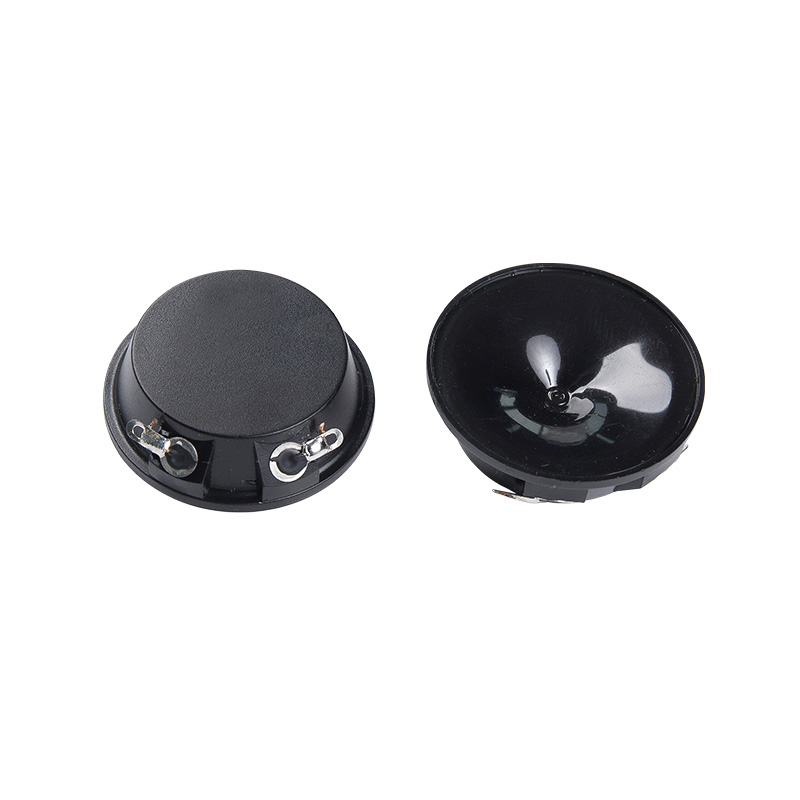Sound Dispersion and Directivity
Position Relative to Other Drivers: The placement of the tweeter within the speaker system must ensure that it integrates smoothly with the other drivers, especially the midrange and woofer. If the tweeter is too close to or too far from the midrange driver, the sound dispersion may be uneven, leading to phase issues or localized sound rather than a cohesive soundstage.
Angle and Directionality: The tweeter’s mounting angle influences the sound’s dispersion pattern. A tweeter placed in a direct, forward-facing position may offer a more focused high-frequency response, while an angled tweeter (e.g., at 15-30 degrees) can help widen the soundstage and ensure that high frequencies are better distributed across the room or listening area. This is particularly important in achieving even high-frequency coverage in both near-field and far-field listening environments.
Frequency Response and Integration with Midrange Drivers
Crossover Frequency Considerations: The placement of the tweeter affects how well it blends with the midrange driver at the crossover frequency. If the tweeter is positioned too far from the midrange driver, the timing or phase alignment between the two may be compromised, leading to a dip or boost in the frequency response at the crossover point. Proper placement ensures a smooth transition between drivers and a seamless full-range sound reproduction.
Vertical vs. Horizontal Alignment: The vertical alignment of the tweeter relative to the midrange and woofer drivers can affect the frequency response, particularly in the vertical plane. Misalignment can lead to vertical dispersion problems, which can degrade imaging and cause off-axis frequency response anomalies. Horizontal alignment, however, tends to have a lesser effect, as tweeters usually radiate higher frequencies more narrowly.
Acoustic Interactions and Phase Alignment
Distance from Boundaries: The distance of the tweeter from the front baffle and the surrounding boundaries of the enclosure can impact reflections, which influence the tweeter’s performance. Ideally, the tweeter should be placed at a position where it minimizes reflections from the cabinet’s surface. If the tweeter is too close to the edges, the resulting reflections can blur the clarity of the high frequencies.
Phase and Time Alignment: The timing of sound waves from different drivers (such as the tweeter and midrange) is crucial for optimal phase alignment. Misaligned drivers, even if only by a small margin, can lead to phase cancellation at certain frequencies, causing uneven sound reproduction or poor imaging. The mounting position must be precise to ensure that the tweeter’s sound waves reach the listener’s ears in sync with the other drivers.

Tweeter Mounting Techniques
Flush Mounting vs. Surface Mounting: In speaker design, tweeters are often either flush-mounted or surface-mounted. Flush mounting (where the tweeter is recessed into the baffle) helps reduce diffraction and smooth out the frequency response, particularly in the higher frequencies. Surface mounting (where the tweeter protrudes from the baffle) can lead to diffraction around the edges of the tweeter, which can cause some high-frequency distortion. However, surface mounting may be more effective for ensuring better sound localization in certain designs.
Tweeter Placement in Ported vs. Sealed Enclosures: The type of speaker enclosure (ported or sealed) also affects tweeter placement. In ported enclosures, the tweeter is often placed near the midrange driver to reduce the effects of air movement from the port, while in sealed enclosures, placement flexibility increases as there is less interference from airflow. Additionally, the volume of air inside a sealed enclosure may have an influence on the overall acoustics of the tweeter's output, depending on its location.
Enclosure Size and Shape
Cabinet Dimensions: The overall size and shape of the speaker enclosure can influence the tweeter’s performance, particularly in terms of standing waves and resonances inside the box. If the tweeter is placed in a location where these acoustic issues are amplified, it can result in distortions in the high-frequency response. A well-designed cabinet with internal bracing or damping material can help control these resonances and ensure that the tweeter performs optimally.
Baffle Size: The size of the baffle where the tweeter is mounted also plays a significant role in controlling diffraction. A large baffle can cause higher frequencies to diffract around the edges, affecting the tweeter’s ability to produce smooth sound at the listening position. The ideal baffle width and tweeter placement can minimize these diffraction effects, leading to clearer, more focused sound.
Listening Position and Room Acoustics
Sweet Spot Optimization: Proper mounting of the tweeter ensures that the listener experiences the best possible performance in the sweet spot—the ideal position where the sound from all drivers converges to form a cohesive soundstage. Tweeter placement can be optimized to direct high-frequency sound toward the listener's ears, especially in setups where critical listening (e.g., home theaters or recording studios) is essential.
Room Reflections: The interaction between the tweeter’s sound and the room's acoustics is crucial for accurate reproduction. The placement of the tweeter relative to reflective surfaces (walls, ceiling, floor) must be carefully considered, as reflections can cause time delay and phase shifts that distort the sound.
Aesthetic and Practical Considerations
Design and Aesthetics: In addition to acoustic performance, the placement of the 50mm tweeter also has aesthetic and design implications. The tweeter's visibility and positioning may need to align with the overall design language of the speaker or room.
Practical Accessibility: Placement can also be influenced by practical considerations, such as ease of access for maintenance or adjustment. For example, if the tweeter is placed too close to other drivers or internal components, it may be harder to repair or replace when needed.


 EN
EN  English
English Deutsch
Deutsch 中文简体
中文简体
